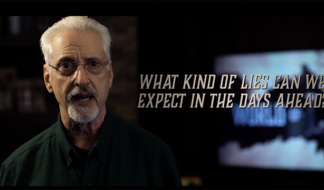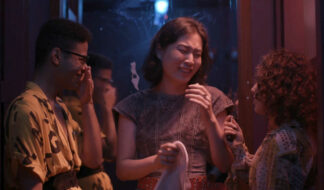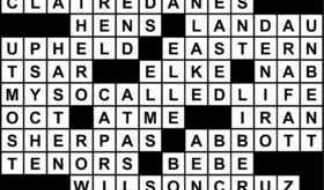By Dan Woog
June 25, 2007
Martina Navratilova. Esera Tuaolo. Dave Kopay. Billy Bean. Billie Jean King. The list is short, but the names are familiar – modern-day, openly gay athletes.
Yet gay sports did not suddenly appear, full blown, in the waning days of the 20th century. Less known – but equally important – are athletes like these: Ana Maria Sagi, Wilhelm Von Homburg, Erik Schinegger, and Joan of Arc.
"Joan of Arc?!"
Their stories, and those of a dozen other sportsmen and women (read down to find out how Joan of Arc made the cut) are rivetingly told in "The Lavender Locker Room." The recent book by Patricia Nell Warren was awarded the 2007 Independent Publisher Gold Medal in the gay/lesbian category, was a finalist for the Benjamin Franklin Awards, and is the number one gay history title on Amazon.com. First famed as the author of "The Front Runner," a groundbreaking 1974 novel about a gay Olympian and his coach, and more recently as a 70-year-old candidate for the West Hollywood City Council, Warren now plows new ground by traveling old, but unfamiliar, territory.
"The Lavender Locker Room" began more than four years ago, when Warren visited OutSports.com. The website did a great job covering the sports world from a gay perspective, she says, but lacked historical references. She asked site founders Jim Buzinski and Cyd Ziegler if they'd ever heard of John Damien, a gay Canadian jockey who sued and – after more than a decade – won a wrongful dismissal case.
When they said no, she proposed a gay history archive on the site. Fifteen profiles later, she realized she had a book.
The result is a 3,000-year, globe-circling journey through gay sports history. She starts with purported lovers Achilles and Patroclus. After Patroclus was killed in battle by Trojans, Achilles organized an athletic competition to honor him. Events included chariot and running races, boxing, wrestling, dueling, archery, and discus and javelin throws.
Warren includes George Villiers, a fencer who was also the long-time partner of King James I.
Some figures are more recent but tragically well known, like Bill Tilden, the tennis champion whose career was ruined by soliciting sex from teenage boys. Others are relatively modern but almost unheard of. Sagi, for example, was "as out a lesbian as you could be in 1930s Spain," Warren says – and a national javelin champion.
A chapter on John Curry, the British skater who was outed prior to the 1976 World Championships, is typical. "I wanted to get away from the standard interview and the emphasis on sex lives," Warren says. "It's important to get the reader into the times and moment that the sport was in, and the reasons why that athlete impacted his or her sport." In the case of Curry, that means delving into the history of figure skating, including an examination of why many male skaters were terrified of appearing "feminine" on the ice.
There are a couple of 21st-century stories, too, including a "Brokeback Mountain"-inspired piece on gay rodeo cowboys.
But Joan of Arc?
"It's really important to look not just at sexual orientation, but at the time everyone lived in,' Warren explains. "Jousting was once the equivalent of football. It had huge prestige and popularity. I grew up around horses, and I realized that when Joan of Arc performed for the king, she had to know how to joust. She had to have been trained in this activity that was so important in both entertainment and war."
Historians believe, Warren says, that Joan of Arc manifested Complete Androgynous Insensitivity Syndrome, a chromosomal condition in which a child looks like a girl, and grows up as one, but her internal genitalia do not develop normally. Gonads, which are in the abdominal cavity, are testes.
Warren draws parallels between Joan of Arc's syndrome and contemporary controversies unleashed by gender testing at the Olympic Games. "It's extremely interesting to see how we treat sexuality, gender identity, gender stereotyping, and public perceptions of all this, particularly as they pertain to sports," she says.
Her audience, Warren says, is "anyone interested in history and sports." She has heard from nonsports fans, and straight men and women, including a heterosexual swim coach in Australia who found it very illuminating.
"We all get tied up in daily headlines, and tend to focus on big names and major sports," Warren says. "But it's fascinating to figure out where sports and society have come from. Figure skating and boxing have been around forever. Gender identity and stereotypes have been entwined with those sports from the very beginning."
So where does all this fit in with "The Front Runner"? "I guess all these profiles are of real-life front runners," says Warren, whose own athletic career includes a 1960s-era fight for the right of women to compete in races longer than 2-1/2 miles.
"Sports was the way that these women and men got out front, and made an impact on their societies and on history."









